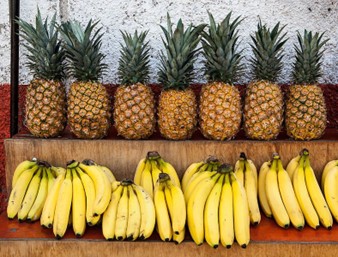Spreadsheets, cooking and chemistry… approaches for tricky questions
Jennifer Marchant
This workshop for those teaching KS4/5 chemistry focussed on a variety of approaches to tricky topics, such as back titrations, deduction of rate equations from more complex data, NMR and common electrolysis vs electrochemical cell mix-ups. 
The focus was on using visual references that students are familiar with, such as setting up calculations like spreadsheets, treating practical set-ups like recipes in cookbooks and using a speed writing contest to discuss rate determining steps and the effect on a rate equation. The aim was to provide participants with ideas they could take directly into the classroom with little or no additional prep required and in doing so help to break down some of the mental blocks students can hold about these topics.
Using analogies such as what you buy that is useful when purchasing a coconut, banana or pineapple vs a tomato led into how to improve atom economy by identifying by-products and turning them into useful co-products. We talked about back titrations by considering the puzzle of how many biscuits my brother ate from the packet while I was out, and how I could calculate it. A chain of people relentlessly passed pens to a willing volunteer who had to write ‘I love chemistry’ before passing them on down the line, leading to a discussion on what the rate equation actually tells us, and therefore how potential rate equations could be deduced from information about the rate-determining step. Dynamic equilibria were compared to trying to clear the floor of a blocks that a toddler is determined to keep out of the box, and it gave a different way of thinking about a system resisting change!
A key feature of many of the techniques was the breaking down of complex tasks into blocks and transferring information from calculations into a table to reduce the cognitive load. Having a common framework for calculations gives students a starting point they can have confidence in.
We had fun and the accompanying presentation is available on Sched and free to use and adapt. For anyone wanting more story-telling or analogies for more fundamental chemical concepts, my book ‘Stardust, the chemistry of the universe and you’ is available on Amazon and is suitable for KS2,3 or 4 depending on how much support is needed to visualise particle behaviour.
Feel free to email me on jennifer@stardustchemistry.com if you have any questions, suggestions or would like to chat!
